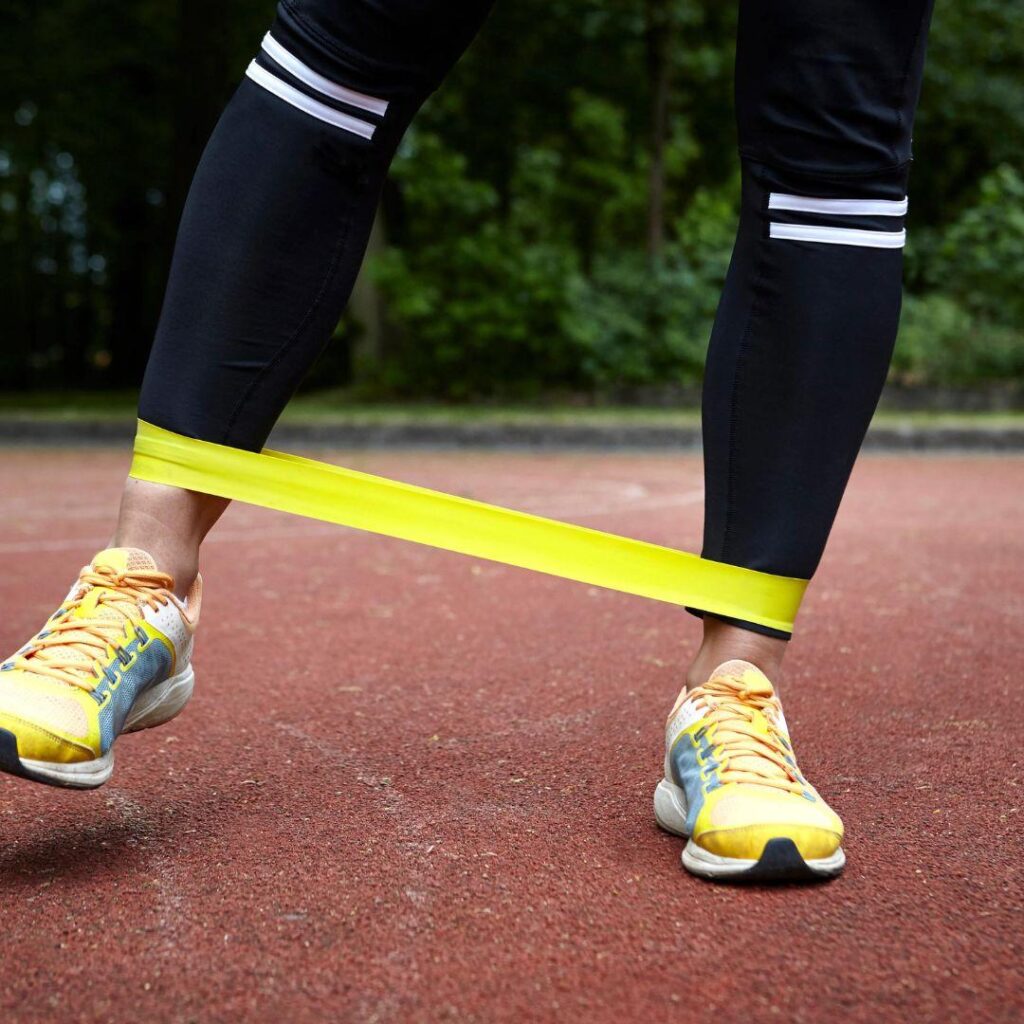
Are you not feeling motivated to work out right now? Are you longing for a way to inject excitement and effectiveness into your home fitness regimen? If you’re nodding along, then it’s time to shake things up. Welcome to a new chapter in your fitness journey, where we’re about to introduce you to a game-changing tool: mini-exercise resistance bands.
In this blog post, we’re going to explore the incredible versatility and benefits of incorporating resistance bands into your home workouts. These unassuming bands may seem small, but their impact on your fitness goals can be monumental. Whether you’re looking to tone muscles, increase flexibility, or enhance endurance, resistance bands have got you covered.
So, if you’re ready to revolutionize your workouts and elevate your fitness game, join us as we delve into the world of mini-exercise resistance bands. It’s time to discover just how transformative these bands can be for your home fitness routine. Let’s dive in!
Benefits of Mini Exercise Resistance Bands

When it comes to home fitness equipment, few tools rival the versatility and effectiveness of mini exercise resistance bands. These unassuming bands pack a powerful punch, offering a multitude of benefits that can take your workouts to the next level.
1. Versatility: One of the greatest advantages of mini exercise resistance bands is their versatility. From strength training to flexibility exercises and even endurance workouts, these bands can do it all. Whether you’re looking to sculpt lean muscles, improve your range of motion, or boost your cardiovascular endurance, resistance bands provide endless possibilities for varying your workouts and targeting different muscle groups.
2. Portability: Another standout feature of mini exercise resistance bands is their portability. Unlike bulky gym equipment, these bands are compact and lightweight, making them perfect for on-the-go workouts. Whether you’re traveling, heading to the park, or simply exercising in the comfort of your own home, resistance bands can easily be tucked into a bag or suitcase, allowing you to travel with your exercise regimen.
3. Affordability: In addition to their versatility and portability, mini exercise resistance bands are also incredibly affordable. Compared to costly gym memberships and large exercise machines, resistance bands offer a budget-friendly alternative that doesn’t skimp on quality. With just a small investment, you can enjoy all the benefits of resistance training without breaking the bank.
4. Effectiveness: Last but certainly not least, mini-exercise resistance bands are highly effective at targeting specific muscle groups and improving overall fitness. By providing resistance throughout the entire range of motion, these bands help to engage muscles more effectively than traditional weight lifting alone. Whether you’re performing squats, lunges, or bicep curls, resistance bands add an extra challenge to your workouts, helping you to build strength, increase muscle tone, and enhance your overall fitness level.
With mini exercise resistance bands imagine jumping on a garden trampoline with a twist of scooting. Trampoline scooters are rapidly becoming a favorite among families and thrill-seekers alike. Learn more
Types of Mini Exercise Resistance Bands
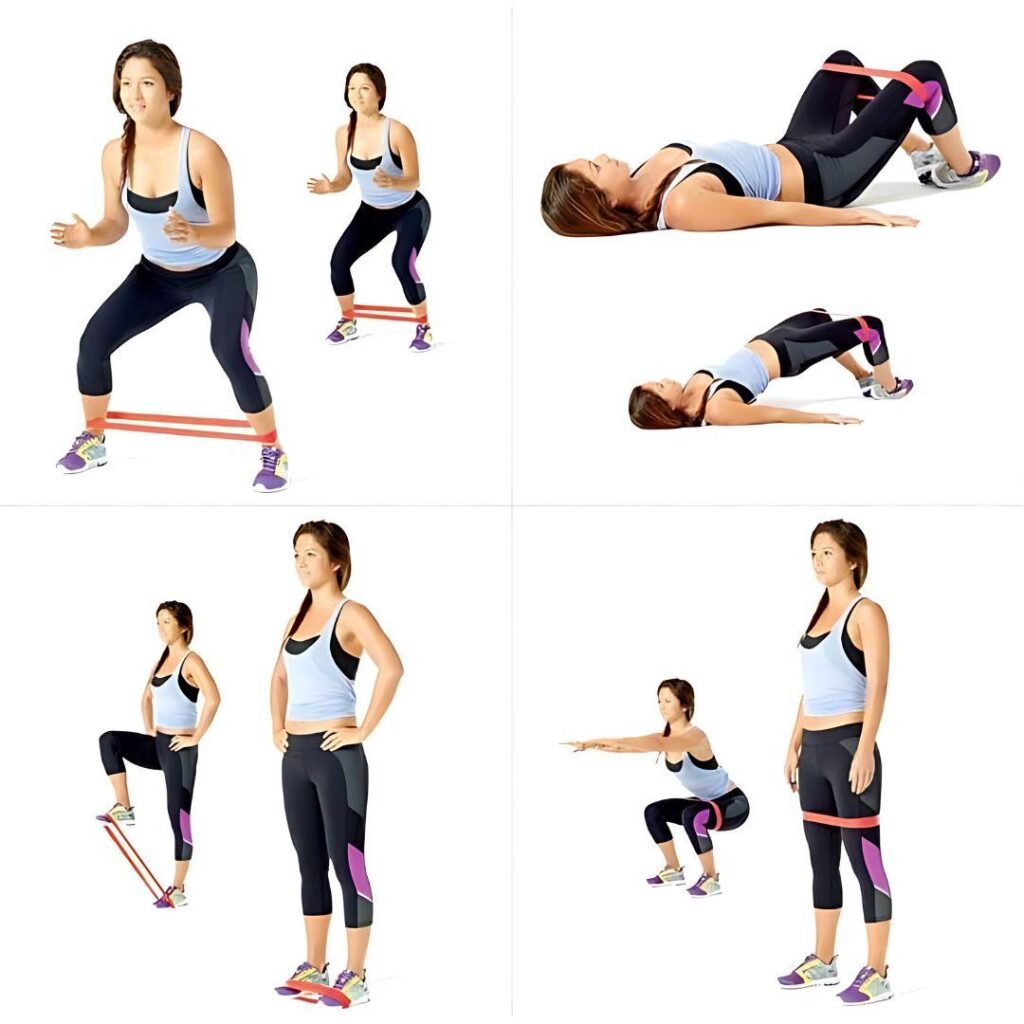
Mini exercise resistance bands come in various shapes and sizes, each tailored to specific fitness needs. Let’s explore the different types:
Loop Bands: Ideal for Lower Body Exercises! Loop bands are perfect for squats, lunges, and leg lifts since they give resistance to lower body movements while efficiently targeting the glutes, hips, and legs. They can be wrapped around the thighs, ankles, or feet.
Therapy Bands: Great for Rehabilitation and Gentle Stretching! Therapy bands, also known as flat bands or rehab bands, are thin, flat strips of latex or fabric. They’re designed to provide gentle resistance for rehabilitation exercises or stretching routines. Therapy bands are excellent for improving flexibility, range of motion, and mobility without putting too much strain on your muscles or joints.
Figure-8 Bands:Perfect for Upper Body Workouts! Figure-8 bands, as the name suggests, resemble the shape of the number eight. These bands typically have handles on either end and are ideal for targeting muscles in the upper body, such as the chest, shoulders, back, and arms. You can use figure-8 bands for exercises like chest presses, rows, shoulder raises, and bicep curls to sculpt and strengthen your upper body.
Tube Bands with Handles: Versatile for Full-Body Workouts! Tube bands with handles, featuring a rubber tube and handles on each end, offer various resistance levels for all fitness levels. They are versatile for full-body workouts, suitable for exercises like bicep curls, tricep extensions, squats, and lateral raises.
No matter which type of mini-exercise resistance band you choose, incorporating them into your fitness routine can help you achieve your fitness goals more effectively.
How to Get Started?
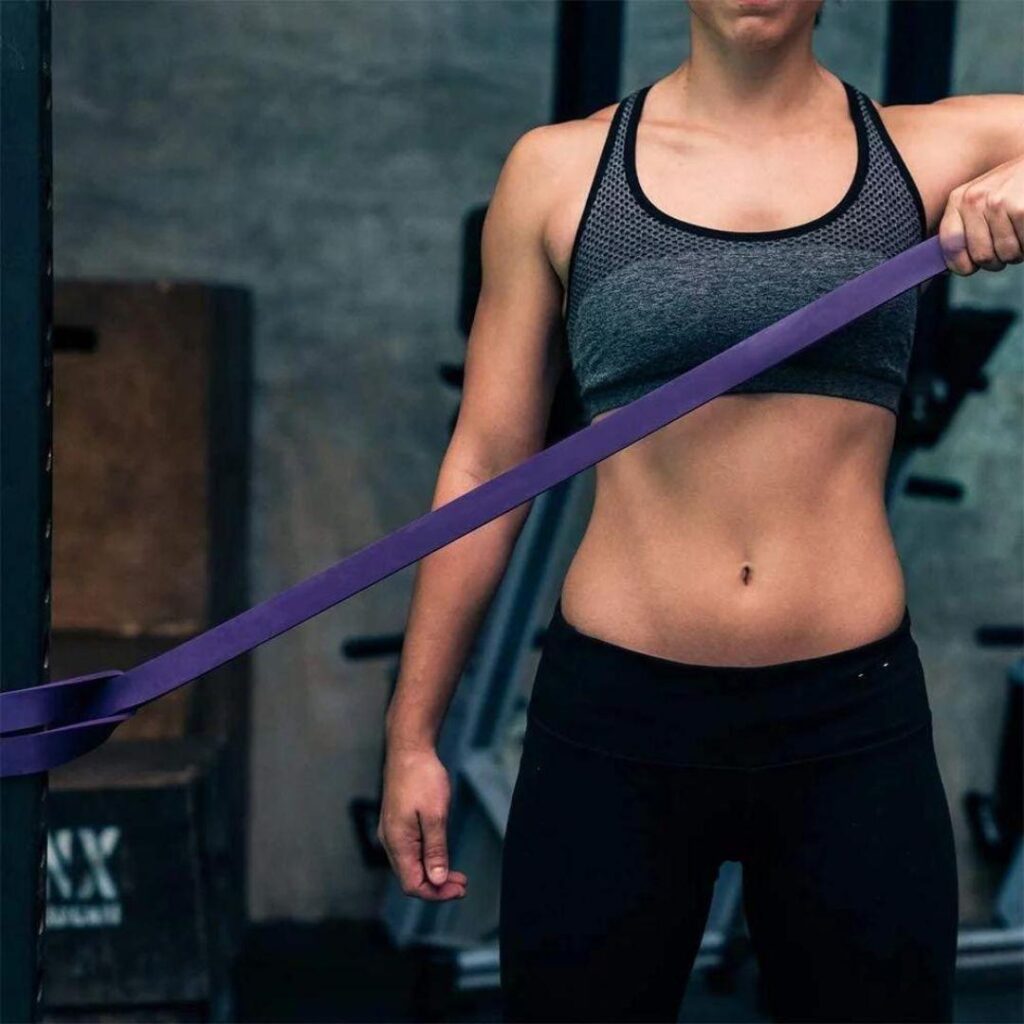
Ready to kickstart your journey with mini exercise resistance bands? Here’s everything you need to know to get started on the right foot:
1. Choosing the Right Bands:
- Assess Your Fitness Level: Consider your current strength and fitness level when selecting resistance bands. Start with lighter resistance bands if you’re a beginner and gradually increase the resistance as you get stronger.
- Understand Resistance Levels: Resistance bands come in various resistance levels, typically categorized by colour or resistance level (e.g., light, medium, heavy). Choose bands that provide enough resistance to challenge your muscles without causing strain or discomfort.
- Consider Your Goals: Think about your fitness goals and the specific exercises you want to perform. Different exercises may require different levels of resistance, so it’s essential to have a variety of bands to choose from.
2. Safety Tips:
- Check for Wear and Tear: Before each use, inspect your resistance bands for any signs of wear and tear, such as cracks, tears, or weak spots. Replace damaged bands immediately to avoid injury.
- Use Proper Form: Maintain proper form throughout your exercises to prevent injury and maximize effectiveness. Keep your core engaged, joints aligned, and movements controlled.
- Start Slowly: If you’re new to resistance band training, start with lighter resistance and gradually increase the intensity as you build strength and confidence.
- Avoid Overstretching: While resistance bands are flexible, avoid overstretching them beyond their limits, as this can cause them to snap back and potentially cause injury.
3. Basic Exercises:
- Squats: Stand with your feet hip-width apart, loop a resistance band around your thighs, and hold onto the ends with your hands. Maintaining your knees in line with your toes and your chest raised, lower yourself into a squat. Put pressure on your heels to get back to the beginning position.
- Bicep Curls: Stand on the center of a resistance band with your feet shoulder-width apart and hold onto the ends with your palms facing upward. Keep your elbows close to your body and curl the bands towards your shoulders, then slowly lower back down.
- Lateral Leg Raises: Attach a resistance band around your ankles and stand on a fitness trampoline with your feet hip-width apart. Keeping your legs straight, lift one leg out to the side as high as you can, then slowly lower back down. Repeat on the other side.
- Tricep Extensions: Hold one end of a resistance band in each hand and raise your arms overhead, keeping your elbows close to your ears. Bend your elbows to lower the band behind your head, then straighten your arms to return to the starting position.
With these tips and exercises in mind, you’re ready to embark on your journey with mini-exercise resistance bands. Always pay attention to your body, maintain consistency, and most of all, have fun!
Making Your Workout Sessions Enjoyable and Relaxing with a Trampoline
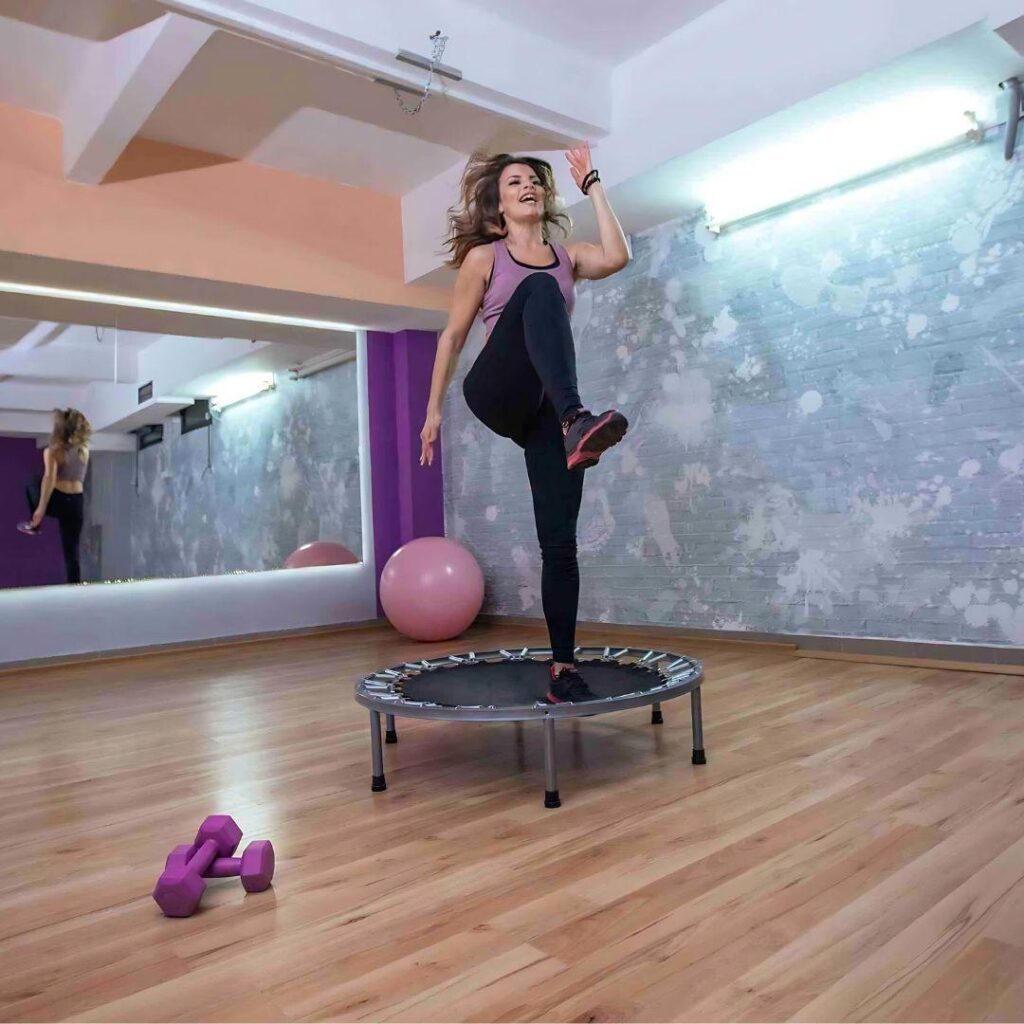
Trampoline workouts offer a unique way to enhance your fitness routine while minimizing impact on your joints. Bouncing on an in-ground trampoline engages multiple muscle groups, improves balance and coordination, and boosts cardiovascular fitness.
Fun Factor: Bouncing on a trampoline adds an element of fun to your workouts, making exercise feel less like work and more like play. The rhythmic motion of bouncing can be exhilarating and uplifting, helping to elevate your mood and increase your motivation to move.
Stress Relief: The repetitive motion of bouncing on a trampoline has a soothing and stress-relieving effect on the body and mind. The rhythmic bouncing motion promotes relaxation, reduces tension, and releases feel-good endorphins, leaving you feeling refreshed and rejuvenated after your workout.
Workout Ideas
Here are some simple trampoline exercises that you can incorporate into your routine to complement your resistance band workouts:
- Warm-Up Routine: Start your workout with a gentle bouncing session on the performance trampoline to get your blood flowing and your muscles warmed up. Focus on light, rhythmic bounces to gradually increase your heart rate and prepare your body for exercise.
- High-Intensity Intervals: Alternate between resistance band exercises and trampoline jumps to create a high-intensity interval training (HIIT) workout. Perform a set of resistance band exercises, such as squats or bicep curls, followed by a burst of intense trampoline jumps, such as high knees or jumping jacks. Repeat this cycle for a challenging and effective full-body workout.
- Cool-Down: End your workout with a light bouncing session on the trampoline to help your body transition into a state of relaxation and recovery. Focus on gentle, controlled bounces to help release tension in your muscles and promote flexibility and mobility. Use this time to stretch your muscles and focus on deep breathing to enhance relaxation and reduce stress.
By incorporating garden trampoline workouts into your routine, you can add variety, fun, and relaxation to your fitness regimen while reaping the numerous physical and mental health benefits. So bounce your way to better health and enjoy the journey of fitness with a trampoline by your side!
Combining Resistance Bands with Other Equipment
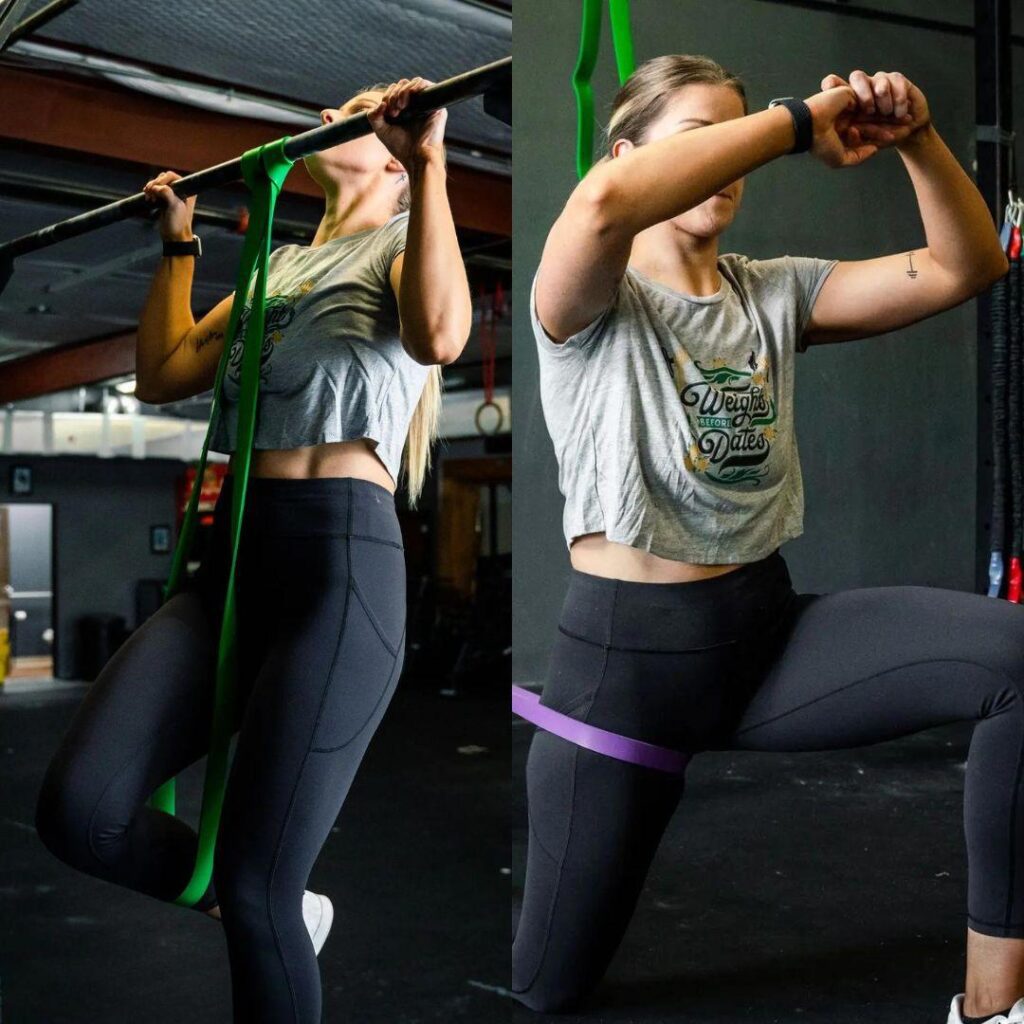
Maximize the effectiveness of your workouts by combining resistance bands with other equipment. Here’s how you can integrate resistance bands seamlessly with various fitness tools:
Dumbbells and Kettlebells: Combine the resistance of bands with the resistance of dumbbells or kettlebells to increase the intensity of your exercises. For example, hold a dumbbell or kettlebell while performing squats or lunges with resistance bands wrapped around your thighs for an added challenge.
Stability Balls: Incorporate stability balls into your resistance band workouts to engage your core muscles and improve balance. Perform exercises such as stability ball squats with resistance bands wrapped around your thighs or stability ball chest presses while holding onto resistance bands for added resistance.
Pull-Up Bars: Pull-up bars and resistance bands work well together. Loop one end around the bar and the other around your foot or knee to help pull yourself up. Other resistance band workouts, such as tricep pushdowns and bicep curls, can be made easier with pull-up bars by using bands attached to the bar and working against resistance.
Experiment with different combinations to find what works best for you and take your workouts to the next level.
Tips for Staying Motivated

Maintaining motivation is key to sticking to your fitness routine and achieving your goals. Here are some effective tips to help you stay motivated and committed to your workouts:
Setting Goals: Establish clear, achievable goals that are specific, measurable, and realistic. Whether it’s increasing strength, losing weight, or improving endurance, having a clear vision of what you want to achieve will help keep you focused and motivated.
Tracking Progress: Use fitness apps or keep a workout log to monitor your improvement. Recording your workouts, tracking your performance, and noting any improvements over time can be incredibly motivating and rewarding. No matter how minor, acknowledge your accomplishments and use them as motivation to keep moving forward.
Mixing It Up: Avoid falling into a rut by regularly changing your workout routine and trying new activities. Incorporate different exercises, equipment, or fitness classes to keep things interesting and challenging. Variety not only prevents boredom but also stimulates different muscle groups and prevents plateaus in progress.
Finding a Workout Buddy: Partnering up with a workout buddy can provide valuable social support and accountability. Whether it’s a friend, family member, or colleague, having someone to share your fitness journey with can make workouts more enjoyable and motivating. Plus, knowing that someone else is counting on you to show up can help keep you committed and on track.
Conclusion
In conclusion, mini exercise resistance bands offer a versatile, portable, and affordable way to enhance your home workouts. From targeting specific muscle groups to improving overall fitness, these bands provide endless possibilities for achieving your fitness goals.
Ready to elevate your fitness routine? Start incorporating mini-exercise resistance bands into your workouts today. Whether you’re a beginner or an experienced fitness enthusiast, these bands can help you reach new heights in your fitness journey. Grab your bands and take the first step towards a stronger, healthier you!


